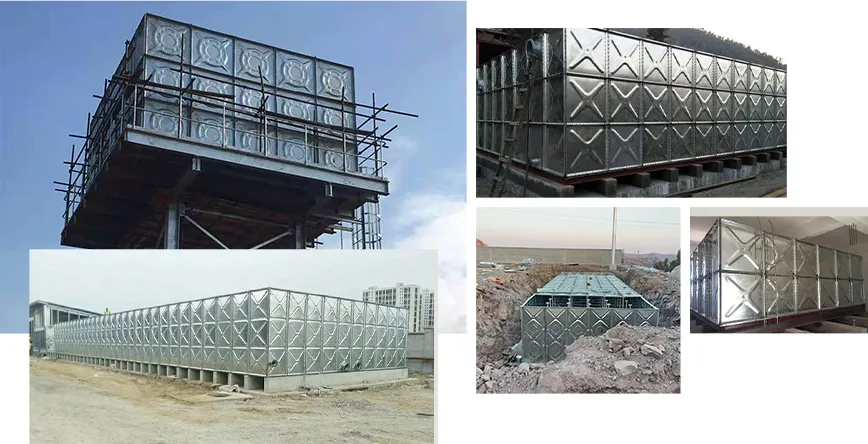loading...
- No. 9, Xingyuan South Street, Dongwaihuan Road, Zaoqiang County, Hengshui, Hebei, China
- admin@zjcomposites.com
- +86 15097380338
- Welcome to visit our website!
building a safe deck
Building a Safe Deck Essential Tips and Guidelines
Building a deck is an exciting project that can enhance your outdoor living space, providing a perfect place for relaxation and entertainment. However, safety is of utmost importance when constructing a deck. A well-built deck not only adds value to your home but also ensures the safety of your family and guests. Here are essential tips and guidelines to help you build a safe and durable deck.
1. Planning and Design
Before you begin construction, it’s crucial to plan and design your deck carefully. Consider factors such as location, size, and style. Make sure your design complies with local building codes and regulations. Check whether you need to obtain permits, as this can vary by region. Additionally, think about the materials you’ll use; pressure-treated wood, composite materials, and PVC are popular options. Each material has its pros and cons, so choose one that fits your aesthetic preferences and budget while also ensuring longevity and safety.
2. Foundation and Framework
The foundation of your deck is vital for its overall stability. Start by marking the perimeter where your deck will be built, and excavate holes for the footings to a depth suitable for your area’s frost line. Concrete footings are a common choice, providing a solid base. Make sure the framing is constructed using durable lumber and is free from defects. Regularly check for proper alignment and level as you build your frame. The support beams and joists should be spaced appropriately, typically 16 to 24 inches apart, and securely fastened to ensure they can support the weight of the deck and its load.
Opting for high-quality materials can significantly enhance the safety and longevity of your deck. When it comes to decking boards, ensure they are adequately treated to resist moisture, pests, and decay. Regularly inspect the materials during construction to avoid using warped or damaged wood. If you choose composite materials, ensure they are from reputable manufacturers, as they are designed to withstand the elements while providing ease of maintenance.
building a safe deck

4. Railing and Stairs Safety
Install proper railings around your deck, especially if it is elevated. Railings should be at least 36 inches high and feature spindles spaced no more than 4 inches apart to prevent accidents. When building stairs, ensure they have a rise that is consistent and a tread depth that is comfortable for walking. Non-slip materials can enhance safety on stairs and various surfaces. Don’t forget to include a sturdy handrail for easy grip while navigating the steps.
5. Regular Maintenance
After your deck is completed, regular maintenance is crucial for safety and durability. Inspect it annually for signs of wear and tear. Look for loose boards, splintering, or signs of water damage. Clean the deck regularly to prevent mold and mildew buildup, and consider applying a weather-resistant sealant every few years. This will help protect the wood and maintain its appearance, ultimately ensuring that your deck remains a safe and enjoyable space.
6. Seek Professional Help When Needed
If you’re not confident in your building skills or if the project seems too daunting, don’t hesitate to engage a professional contractor. A qualified builder can ensure that your deck is constructed safely, adheres to local codes, and meets your vision. Investing in professional help can save you time and provide peace of mind.
Conclusion
Building a safe deck requires careful planning, quality materials, and a commitment to safety throughout the construction process. By following these guidelines, you can create a beautiful outdoor space that enhances your home and provides a safe environment for enjoyment. Remember that a well-designed and properly maintained deck can serve as a beloved gathering place for family and friends for years to come. Happy building!
-
The Rise of FRP Profiles: Strong, Lightweight, and Built to LastNewsJul.14,2025
-
SMC Panel Tanks: A Modern Water Storage Solution for All EnvironmentsNewsJul.14,2025
-
GRP Grating: A Modern Solution for Safe and Durable Access SystemsNewsJul.14,2025
-
Galvanized Steel Water Tanks: Durable, Reliable, and Ready for UseNewsJul.14,2025
-
FRP Mini Mesh Grating: The Safer, Smarter Flooring SolutionNewsJul.14,2025
-
Exploring FRP Vessels: Durable Solutions for Modern Fluid HandlingNewsJul.14,2025
-
GRP Structures: The Future of Lightweight, High-Performance EngineeringNewsJun.20,2025
